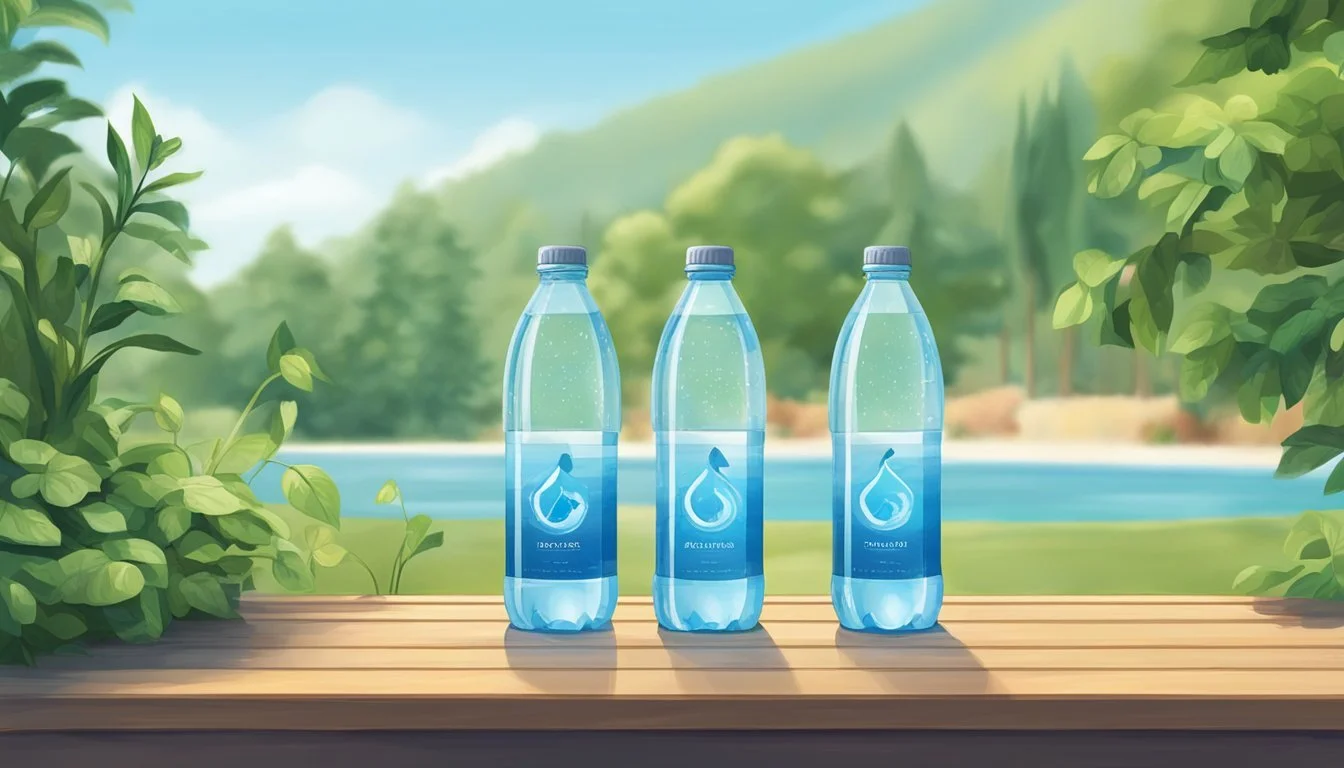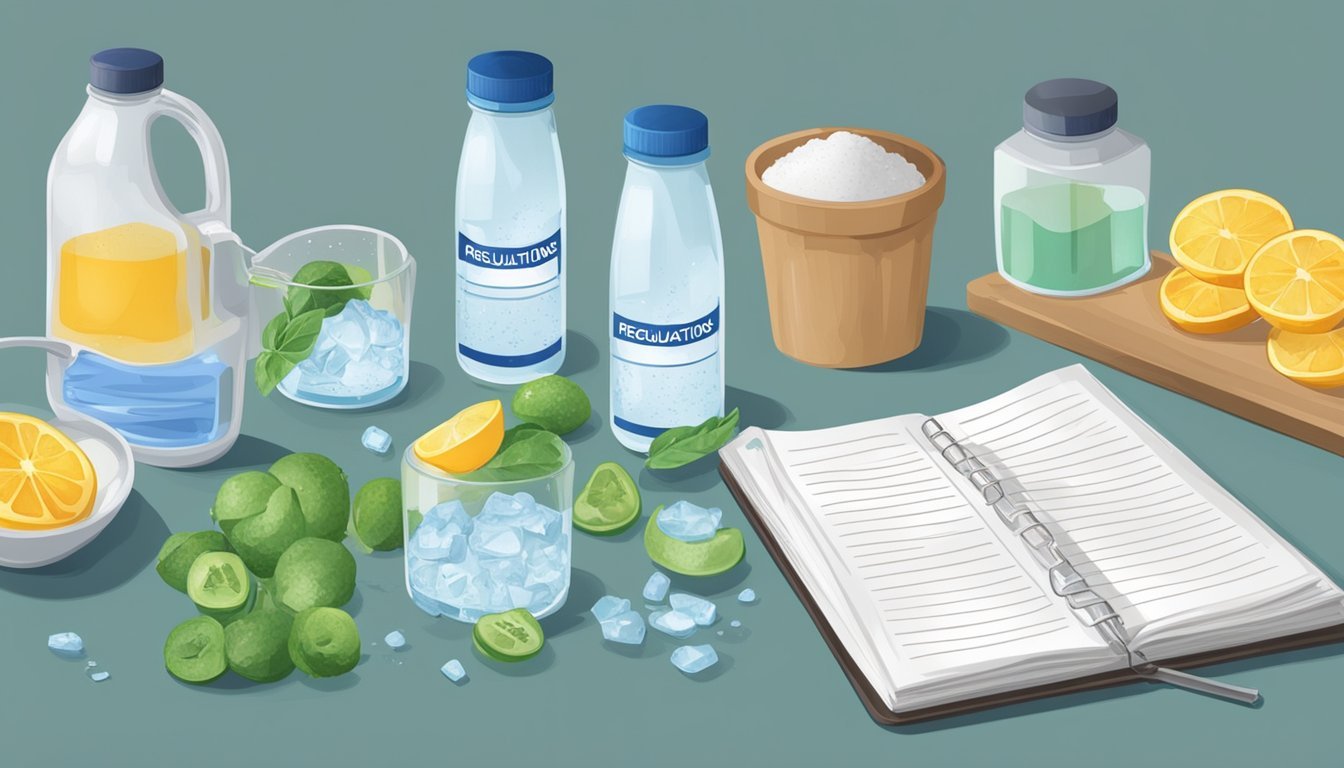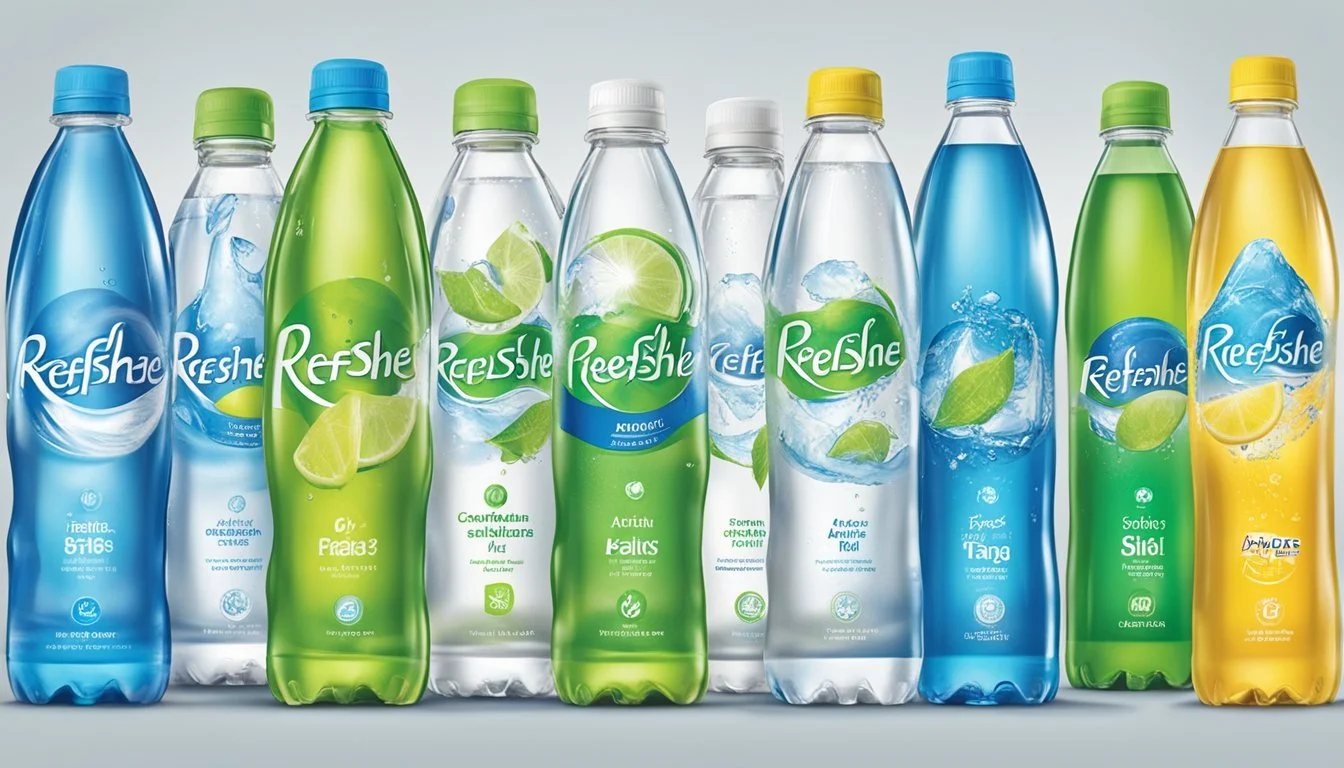Refreshe vs. Action
Comparing Bottled Water Brands
When it comes to choosing the best bottled water, knowing the differences between brands can make all the difference. Refreshe and Action are two bottled water brands that are often compared due to their unique features and consumer appeal. While Refreshe is marketed as an everyday, affordable option with no additives and a balanced pH level of 7.4, Action emphasizes its crisp taste and superior hydration benefits, making it a favorite among athletes and active individuals.
Action stands out as the better choice for those seeking enhanced hydration and a refreshing taste. Its reputation for purity and the inclusion of essential electrolytes cater to a lifestyle that demands more than just basic hydration. On the other hand, Refreshe is ideal for budget-conscious consumers who prioritize accessibility and straightforward hydration without additional frills.
Understanding these distinctions can guide your decision-making process and ensure you select the brand that best aligns with your needs and preferences.
Overview of Bottled Water Brands
When comparing bottled water brands, a variety of factors come into play, such as packaging, price, and water source.
Refreshe offers a budget-friendly option and focuses on affordability for its consumers.
Action also targets the budget-conscious market but with a slightly different philosophy, emphasizing both cost and accessibility.
Evian is known for its mineral-rich content sourced from the French Alps.
Fiji features artesian water with a unique mineral profile, often positioned as a premium brand.
Aquafina and Dasani are well-known for their widespread availability and consistent quality. Both brands use purified water processes.
Voss markets itself with sleek, stylish packaging and high-quality water sourced from Norway.
Smartwater is popular for its vapor-distilled water combined with added electrolytes for taste.
Epura and Lifewtr tend to focus on purity and added mineral content, catering to both health-oriented consumers and those who appreciate premium water.
Penta distinguishes itself with a proprietary purification process aimed at achieving ultra-purity.
Ethos Water combines quality with a social mission, as proceeds support clean water initiatives worldwide.
Nestlé Pure Life emphasizes its rigorous testing and filtration methods.
Icelandic Glacial boasts water sourced from natural springs in Iceland with minimal processing.
Crystal Geyser offers a natural spring water option with various packaging sizes.
Each brand has its unique selling points, tailored to meet different consumer preferences and needs in the bottled water market.
Evaluating Water Quality
When choosing between Refreshe and Action bottled water, important factors to consider include pH balance, mineral content, and potential contaminants. It is essential to compare these aspects to understand their impact on water quality and safety.
pH Balance and Acidity
The pH level of bottled water can significantly affect its taste and perceived health benefits. Refreshe artesian water has a pH level of 7.4, which is neutral to slightly alkaline. This balance is typical for bottled waters claiming potential health benefits, as slightly alkaline water is often preferred by consumers.
Action water, depending on its specific variety, may have slightly different pH levels. Bottled waters marketed as alkaline often have a pH above 7. To determine this, one must check the label or product information for the exact pH values. Consuming water with a balanced pH is crucial for those monitoring their intake of acidic or alkaline substances for health reasons.
Mineral Content and Electrolytes
Mineral and electrolyte content in bottled water can enhance its taste and provide essential nutrients the body needs. Refreshe water sources its minerals naturally, ensuring beneficial electrolytes without additives. Key electrolytes like sodium, potassium, and magnesium support hydration and bodily functions.
Action water is likely to feature similar mineral profiles, especially if marketed as a health or sports-focused brand. Checking the nutrition facts label for details on mineral content helps determine its value. These minerals not only contribute to taste but also play an essential role in maintaining electrolyte balance and overall hydration.
Testing for Contaminants
Ensuring that bottled water is free from harmful contaminants is a primary concern. Consumer Reports has highlighted that some bottled waters contain toxic PFAS chemicals, which are long-lasting substances found in various environments. Regular testing for contaminants such as lead, arsenic, and bromate is vital for safety.
Refreshe's reports often confirm the absence of such contaminants, making it a safer choice. Action water's safety depends on similar stringent testing protocols. Consumers should look for transparency in testing results, ensuring their bottled water is free from harmful chemicals and meets safety standards. Regular updates on testing and certification from credible sources help maintain trust in the product's quality.
Health Considerations
Regarded as essential to health, bottled water brands often differ in their impact on hydration, nutrient content, and potential health risks. The following sections provide a detailed look at factors like nutrient enhancement, marketing claims, and potential health risks.
Hydration and Nutrient Enhancement
Hydration is a primary concern when evaluating bottled water. Both Action and Refreshe effectively hydrate the body, but Action often includes added nutrients like electrolytes. Enhanced waters may contain magnesium, calcium, and potassium.
Such minerals are crucial for various body functions. Magnesium supports muscle and nerve function, calcium is essential for bone health, and potassium helps maintain cellular function and heart health. Drinking water enriched with these nutrients provides added health benefits, especially for those deficient in these minerals.
Understanding Labels and Marketing Claims
Marketing claims can be misleading. Action often markets itself as a premium, nutrient-enhanced water, highlighting its added electrolytes and vitamins.
Refreshe, distributed by Better Living Brands, aims for affordability and accessibility, often lacking detailed nutrient information on its labels. Consumers should carefully read labels to understand what they are drinking. Terms like "spring water" or "mineral water" suggest natural sources, but added ingredients should be verified for authenticity.
Knowing the difference between minerally enhanced water and naturally occurring minerals in water is key to making informed choices.
Potential Health Risks
Potential health risks vary between brands. Refreshe's more mainstream and affordable option may lack rigorous sourcing standards, possibly leading to contamination. Action, while premium, must also ensure that added nutrients don't exceed safe levels.
For instance, excess calcium or magnesium could lead to kidney stones. Similarly, too many added vitamins could impact liver function.
Also, bottled water may pose a risk to children if ingredients like caffeine or artificial sweeteners are present. Ensuring the purity and safety of water through independent testing can mitigate such risks, providing peace of mind in everyday consumption.
Environmental and Sustainability Factors
Consumer choices in bottled water brands are increasingly influenced by environmental and sustainability considerations. Key areas of impact include the use of plastic bottles and recycling, conservation of water sources, and specific sustainability initiatives undertaken by each brand.
Plastic Bottles and Recycling
Plastic bottles are a significant factor in the environmental footprint of bottled water. Refreshe predominantly uses plastic (PET) bottles, which are recyclable but often end up in landfills due to inadequate recycling programs. Action also utilizes PET but emphasizes lighter-weight bottles to reduce plastic use.
Actions to mitigate these issues include using more recycled materials in bottle production and encouraging consumers to recycle correctly. Ensuring that bottles are recycled can significantly lower environmental impact, but this requires robust waste management systems.
Water Source Conservation
Water sourcing for bottling can strain local water supplies. Refreshe sources its water from municipal supplies, undergoing standard treatment processes. Action harnesses water from natural sources, including springs and aquifers, often filtered through volcanic rock which naturally enhances purity.
Maintaining the natural balance of these sources is critical. Conservation practices, such as regulating water withdrawal and protecting recharge areas, help preserve the sustainability of these water sources. Overuse can deplete water tables and disrupt ecosystems, so brands must adopt responsible sourcing practices.
Sustainability Initiatives by Brands
Both brands have made efforts to enhance their sustainability. Refreshe focuses on budget-friendly products and is working to improve their packaging to be more eco-friendly. Action is known for its commitment to reducing its carbon footprint.
This includes using renewable energy in manufacturing processes, investing in advanced water treatment technologies, and actively participating in reforestation projects. Also, Action promotes campaigns to educate consumers about the importance of recycling and sustainability.
In conclusion, while both brands face challenges in reducing their environmental impact, their commitment to sustainability through recycling, water source conservation, and innovative initiatives can make a significant difference. Careful consideration of these factors is essential for consumers looking to make environmentally-conscious choices.
Water Filtration and Treatment Methods
Water filtration and treatment utilize various technologies to ensure the purity and safety of both bottled and filtered water. Key methods include reverse osmosis, natural water sourcing, and the use of enhancements and additives for improved taste and health benefits.
Reverse Osmosis and Filtration Technology
Reverse osmosis (RO) is a critical technology in water filtration. It uses a semipermeable membrane to remove ions, molecules, and large particles from water. RO is highly effective in reducing contaminants like lead, fluoride, and chlorine, ensuring cleaner and safer drinking water.
Other filtration methods often used alongside RO include carbon filtering. Carbon filters excel at removing organic compounds and chlorine, enhancing the water's taste and odor. Filtration technology also encompasses ultraviolet (UV) light treatment, which disinfects water by destroying bacteria and viruses, providing an extra layer of safety.
Natural Water Sources and Filtration
Natural water sources, such as spring water and groundwater, offer high-quality starting points for bottled water. Spring water is collected from underground sources, often having passed through layers of rock and soil, naturally filtering out contaminants. This method helps in maintaining the natural mineral content and pH levels.
Groundwater is another source, extracted via wells or aquifers. Although originating from natural sources, it typically requires additional treatment to ensure safety. Filtration and UV treatment further purify this water, ensuring it is free from harmful organisms and contaminants.
Enhancements and Additives
Enhancements and additives play a crucial role in elevating the quality of both filtered and bottled water. Many bottled water brands add minerals like calcium, magnesium, and potassium post-filtration to improve taste and provide health benefits. These minerals can also help maintain balanced pH levels.
Innovative treatments, such as Hydro-7 and other proprietary technologies, are sometimes used to enhance the water. These methods can further remove impurities, improve clarity, and ensure a consistent, high-quality product. Additionally, ozonation and chlorination are employed to disinfect water, adding an extra layer of safety against microbial contamination.
Consumer Awareness and Choices
Consumers are increasingly concerned about the cost, quality, and transparency of bottled water brands. This section explores the factors influencing their decisions, including price comparison, access to quality testing data, and feedback from community and consumer reports.
Comparing Cost Versus Benefits
When comparing Refreshe to Action, price is a significant factor. Refreshe is often considered a budget-friendly option. Its affordability appeals to consumers looking for a basic hydration solution without the premium cost.
Action, on the other hand, positions itself as a premium brand. It often uses marketing strategies that highlight its high-quality sourcing and superior taste. This brand targets consumers willing to spend more for perceived better quality and unique features.
The benefits of each brand must be weighed against their costs. Consumers need to consider whether the additional spending on Action justifies the benefits offered over Refreshe. Ultimately, the decision often boils down to personal preference and budget constraints.
Access to Quality Testing Information
Accessing quality testing information is crucial for informed consumer choices. Refreshe and Action differ significantly in how they disclose such data. Refreshe provides basic information regulated by FDA standards but may lack comprehensive transparency.
Action, by contrast, often emphasizes thorough quality testing in its marketing. This includes detailed reports on the purity and mineral content of its water. Action’s commitment to transparency can be appealing to consumers who prioritize safety and trustworthiness.
EPA and FDA regulations ensure both brands meet minimum safety standards. Nevertheless, the granularity of information provided by Action may foster greater consumer confidence.
Community and Consumer Reports Feedback
Community feedback and reports from consumer organizations like Consumer Reports play a crucial role. Refreshe is frequently reviewed for its cost-effectiveness and general availability. Consumers appreciate its reliability as a low-cost option.
In contrast, Action often receives praise for its taste and packaging, which aligns with its premium image. Environmental concerns, such as the use of sustainable materials in packaging, are also more commonly associated with reviews of Action.
Consumer Reports, which investigates and publishes comparative analyses, can provide insightful data about both brands. Their unbiased reviews can help consumers make more educated decisions, particularly when balancing cost with perceived quality and taste.
The Bottled Water Taste Test
The taste test focused on comparing Refreshe and Action bottled waters. Each sample was evaluated by a panel of individuals for taste, preferences, and brand perceptions.
Taste: The taste of each water was assessed for purity, freshness, and any detectable aftertastes. Panelists noted that Refreshe had a crisp, clean flavor with no aftertaste, appealing to many who prefer a straightforward hydration experience. Action, on the other hand, was described as slightly smoother but with a hint of mineral aftertaste.
Preferences: Personal preferences played a significant role. Some panel members preferred the minerally notes of Action as a mark of higher quality, influenced perhaps by its marketing as a premium product. Others leaned towards Refreshe for its plain, unaltered taste suitable for everyday consumption.
Brand Perceptions: Brand perceptions influenced opinions as well. Refreshe is often seen as a reliable, budget-friendly option found in many supermarkets. Action is marketed as a more upscale choice, reflecting in its perceived higher value.
Marketing: Marketing tactics also impacted the taste test results. Refreshe's branding focuses on affordability and accessibility, appealing to price-conscious consumers. Action's branding emphasizes purity and premium quality, resonating with those willing to pay a bit more for perceived excellence.
Attribute Refreshe Action Taste Crisp, clean, no aftertaste Smooth, slight mineral note Preferences Everyday drinkability Premium, high-quality feel Brand Perception Reliable, budget-friendly Upscale, high-value Marketing Affordability, accessibility Purity, premium quality
The taste test revealed these subtle yet significant differences, highlighting both waters' unique strengths and consumer appeal points.
Regulations and Standards
Both Refreshe and Action bottled waters adhere to strict regulations and standards to ensure safety and quality. The roles of governmental agencies and adherence to international standards are critical in maintaining these products' reliability.
FDA and EPA Oversight
The FDA regulates bottled water under the Federal Food, Drug, and Cosmetic Act (FFDCA) and ensures it meets specific safety standards. This includes limits on contaminants and regular testing requirements.
The EPA, on the other hand, oversees public drinking water systems and enforces the Safe Drinking Water Act. While the regulations for tap water and bottled water are similar, the FDA's lead standard for bottled water is more stringent than the EPA's for tap water. The FDA cap is 5 ppb for lead, compared to the EPA's 15 ppb for tap water.
Regular monitoring and testing are mandated, with bottled water companies required to adhere to regulations detailed in Title 21 of the Code of Federal Regulations. These rules ensure contaminants in bottled water remain within safe limits, safeguarding public health.
International Water Quality Standards
Internationally, bottled water must comply with various regional and global standards. The World Health Organization (WHO) provides guidelines that many countries adopt to ensure water quality. These guidelines cover a wide range of contaminants, including microbial and chemical substances.
The European Union also sets rigorous standards through the European Bottled Water Association (EBWA). These standards often align with or exceed those set by the WHO, ensuring high-quality bottled water across member states.
Compliance with these international standards is crucial for bottled water brands that distribute products globally. This involves meticulous quality control processes and regular testing to ensure consistency and safety, supporting consumer confidence worldwide.
Practical Tips for Consumers
1. Check the Source: When choosing between Refreshe and Action, consumers should investigate the water source. Refreshe often sources from Niagara Bottling, while Action may have different sources.
2. Packaging: Consider the packaging options. Refreshe offers more everyday, affordable packaging, while Action may provide different choices.
3. Hydration Needs: Evaluate your hydration needs. If daily consumption is high, an everyday brand like Refreshe might be a practical choice. For occasional use, Action may be preferable.
4. Price Point: Note the price point. Refreshe is marketed as a more affordable option, making it accessible for regular purchase.
5. Environmental Impact: Assess the environmental impact. Look for recyclable and reusable packaging options. Action might offer different sustainable packaging that aligns with eco-friendly practices.
6. Taste and Quality: Taste preferences can vary. Some may find Refreshe suitable for daily use, while others might prefer the taste of Action for special occasions.
7. Usage in Beverages: If using bottled water in other beverages, such as coffee or tea, consider how each brand’s taste may affect the final product.
8. Water Filters: Ensure you’re aware of your home water filters and how bottled water can complement filtered water in your diet.
9. Diet and Lifestyle: Align your choice with your dietary needs and lifestyle. Staying hydrated with the right water can support overall well-being.
10. Community Reviews: Engage with other consumers via email or Twitter to gather opinions and experiences. Often, firsthand feedback can guide your choice.
11. Documentation: Download product comparisons or detailed reports in PDF format from reliable sources for a comprehensive understanding of the differences and benefits each brand provides.
More About Refreshe
Cascade Mountain vs Refreshe: Which Bottled Water is Better?
Hawaiian Springs vs Refreshe: Which Bottled Water is Better?
Icelandic Glacial vs Refreshe: Which Bottled Water is Better?
Mountain Valley Spring Water vs Refreshe: Which Bottled Water is Better?
Nestle Pure Life vs Refreshe: Which Bottled Water is Better?
Refreshe vs Kirkland Signature: Which Bottled Water is Better?
Richard's Rainwater vs Refreshe: Which Bottled Water is Better?
Talking Rain AQA vs Refreshe: Which Bottled Water is Better?
Whole Foods Italian Still Mineral water vs Refreshe: Which Bottled Water is Better?






